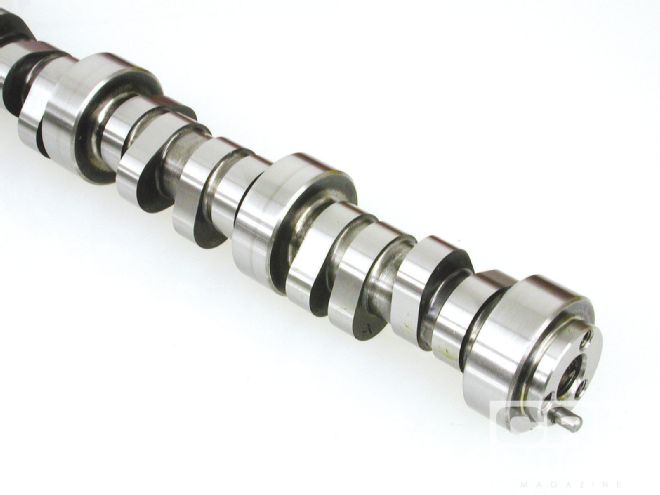
We’ve come a long way from the early days of cam selection when it was as easy as saying “I’ll take the three-quarter race cam.” While computers have made our lives easier in some ways (and ridiculously complex in others), one bright spot is computer engine simulation and cam selection software. Comp Cams has offered its CamQuest cam selection software for several years for a reasonable price but recently upgraded the program and now offers it free straight off the Comp Cams website. We decided to simulate the performance of the 383 we were planning to use for the AFR intake and cylinder heads dyno test (“Make 561 HP Using AFR’s Composite Intake and 195CC V2 Heads,” page 14). We had already chosen the hydraulic roller camshaft when we entered the data into the program and were more than a little surprised to see that the program had chosen the same cam! The CamQuest cam selection software estimated the 383 would crank out 542 hp at 6,500 rpm with peak torque of 501 lb-ft at 5,000, while the real engine with the AFR TXR intake nailed 559 hp at 6,200 and 520 lb-ft of torque at 5,000 rpm. As you can see, the numbers are amazingly close and actually hitting the exact peak torque rpm. After studying the numbers for a moment, we realized we had simulated the engine with mufflers instead of the open headers that ran on the engine. Changing the simulation to open headers created 564 hp at 6,500 and a peak torque of 525 at 5,000 rpm, bringing the simulated numbers even closer.
Simulating one engine shouldn’t clinically endorse this program, but this certainly makes it an excellent tool to help you decide which cam would be right for your application. An even better use might be to simulate several different camshafts in various configurations to see how the cam affects the power curve. An important evaluation might be to focus on camshafts that offer good low-speed torque while broadening and maximizing the power between peak torque and peak horsepower. One limiting aspect of the CamQuest program is that it only offers vague descriptions for cylinder heads such as “high-performance ports with stock valves” or “high-performance, pocket-ported with stock valves” up to “high-performance, fully ported heads with large valves.” If you desire to get more detailed with actual flow numbers, you can always step up to the more sophisticated version of this program called Desktop Dyno, also available through ProRacingSim.com for $49.95.
So where do you find this simple and free program? All you have to do is log on to CompCams.com, click on the CamQuest button on the home page, and after you’ve registered, just follow the prompts. You can print the results, email a Comp Cams technician for further advice, or just experiment with different cams for your BFE (best favorite engine).